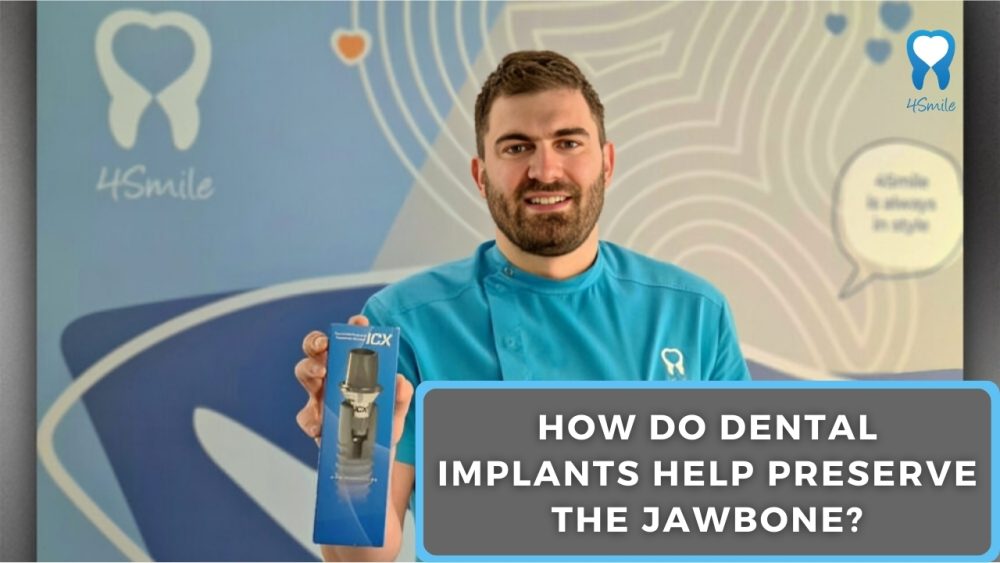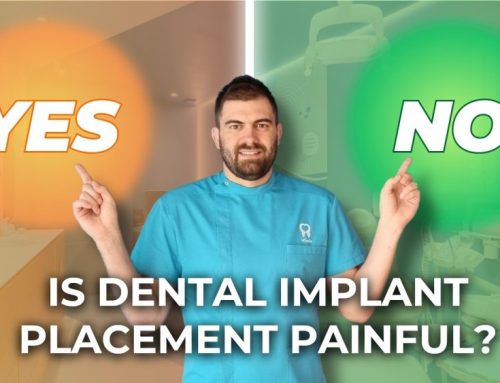Missing teeth don’t leave a good impression. However, if you have a gap in your mouth, you’re lucky to live in an era of advanced dentistry. The missing teeth can be restored with dental implants, which in sensation and appearance, can be compared to natural teeth.
Dental implants are not only implanted for aesthetic reasons, but primarily for functional reasons.
In this week’s blog from Dental Center 4Smile, one of the best clinics in Croatia, find out how dental implants help preserve the jawbone.
What is a dental implant?
A dental implant is not actually a part of the tooth that looks like a tooth; it’s a titanium screw-like piece that integrates with the jawbone. A dental implant serves as a base to support a prosthetic tooth. Between 2 to 6 dental implants can be installed to support a dental bridge consisting of multiple prosthetic teeth, i.e., ceramic dental crowns, or a fixed prosthesis.
How does a dental implant help preserve the jawbone?
Dental implants not only enhance the appearance of your smile but also maintain a strong profile of your face. Jawbone serves a purpose: to support teeth. When you lack a tooth, the lower jawbone weakens, loses its strength, and eventually physically resorbs (disappears).
Other options for tooth replacement, such as ceramic dental crowns or ceramic dental bridges, only cover what is missing on the surface. They do not help prevent bone loss or resorption. Dental implants replace the root as well as the visible tooth, preventing bone loss.
Vanity is not the only reason for dental implantation. When you lose bone in one part of the jaw, all the teeth in the mouth become looser and more prone to infections and shifting. A strong jaw is a healthy jaw, and if you’re missing teeth, you can’t have a strong jaw without replacing them with dental implants.
When is the best time to get a dental implant after losing a tooth?
Ideally, you should start the dental implant placement process within 2 to 6 months after losing a tooth. This is long enough for the gum tissue to properly heal after extraction but short enough to prevent significant bone loss.
Can I get dental implants if there is significant jawbone loss?
Yes, although it depends on your overall oral health and the extent of bone loss.
Bone augmentation or sinus lift can be used to place additional bone material in the jaw, which can help support the dental implant and ensure its proper healing.
The healing process after sinus lift or bone augmentation usually takes at least 6 months, and you’ll need to wait until you fully recover from these treatments before getting dental implant placement.
To find out if you’re a candidate for dental implants, schedule a consultation with our dentist Ivan Antolković in Zagreb, Croatia.
If you are a patient from abroad, who is interested in getting tooth replacement with dental implants, or any other tooth replacement option, feel free to contact us on social media. If you send us an X-ray of your jaw, doctor Ivan Antolković may immediately be able to tell you what would be the best option for you, free of charge!
Also, if you are interested in getting your new smile in Europe, our doctor Antolković will make a free therapy plan for you including the offer, and our professional team in Dental Centre 4Smile will help you organize your trip to our clinic.
You will find out that getting your new smile in Croatia is not only much cheaper, while maintaining the best quality of dental work, but also not so complicated at all!
With organized free transport from the airport, booked accommodation, provided medication, post-operative care, and other things that our service includes, taking your first step in getting the best version of your smile in Croatia is really a great idea!






